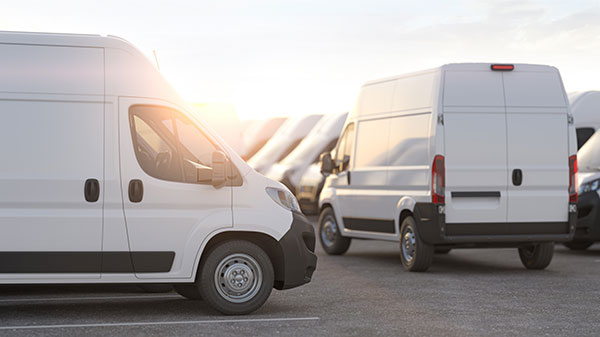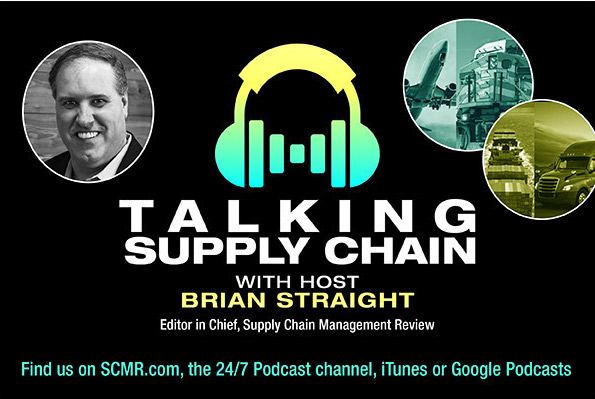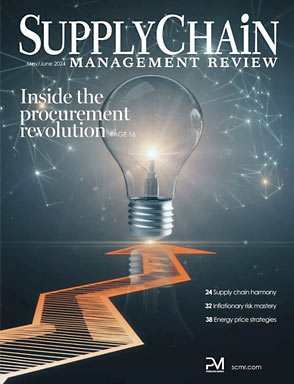The 2025 landscape of e-commerce logistics is evolving, with businesses facing the dual challenge of meeting consumer expectations for fast delivery while keeping operational costs under control. The COVID-19 pandemic accelerated online shopping trends, pushing companies to prioritize rapid shipping solutions, but this has come at a significant financial cost. Now, with e-commerce industry growth rates stabilizing and consumers becoming more price conscious, both retailers and carriers must shift gears to focus on cost-reduction strategies.
The pandemic years: Focus on delivery speed
In 2024, U.S. retail e-commerce sales were projected to hit $1.3 trillion, reflecting an explosive 18% compound annual growth rate (CAGR) from 2020. Delivery speed was increasingly important to e-commerce customers as the COVID-19 pandemic accelerated the shift to online shopping. A 2021 McKinsey report highlighted that more than 90% of U.S. online shoppers expect free two- to three-day shipping, and half of omnichannel consumers will shop elsewhere when delivery times are too long. In response to this need for speed, more than 75% of specialty retail supply chain leaders prioritized two-day delivery by investing in localized fulfillment centers and omnichannel fulfillment. Retailers like Walmart leveraged their extensive network of physical stores as distribution hubs, enabling same-day and next-day deliveries.
Carriers followed suit by investing in technology and route optimization. UPS invested in advanced robotics, AI, and machine learning to automate sorting and route optimization, helping it reduce processing times, improve operational efficiencies, and accelerate deliveries. FedEx built new regional sorting facilities and expanded existing ones, reducing the distance packages need to travel for final delivery.
Rising e-commerce logistics costs
The result? Substantial reductions in delivery times, setting new standards in the e-commerce industry and meeting the rising demand for faster deliveries. According to this DC Velocity report, in November 2024 the average delivery time was just 3.7 days—a 27% improvement from November 2023 and a 33% improvement from November 2022.
However, these improvements in speed came with soaring logistics costs. The 2024 State of Logistics report by the Council of Supply Chain Management Professionals states that U.S. business logistics costs increased by 20% in 2021 alone, driven by labor shortages, transportation bottlenecks, a 50% increase in fuel costs, and rising investments in infrastructure and automation. The industry traded cost efficiency for delivery speeds, reacting to customer expectations and the pandemic-induced demand.
Consumer outlook 2025 and beyond: Focus on costs
The rapid growth of e-commerce seen during the pandemic years is expected to return to normal levels for the foreseeable future, with annual growth estimates ranging from 7.7% (2025 State of the American Ecommerce report) to 8.7% (Oberlo’s forecast). E-commerce shoppers are becoming more price-sensitive, driven by a combination of economic factors, ease of comparison shopping, and shifting consumer expectations as this Consumer Goods Technology report highlights. There is a growing trend of consumers favoring affordability over brand loyalty. Platforms like Temu and Shein have disrupted traditional retail by offering extremely low prices, appealing to budget-conscious consumers. A recent McKinsey article shares that 90% of consumers are willing to wait two or three days for deliveries, especially if it lets them avoid shipping fees.
How can shippers and logistics providers respond?
As consumers lean toward affordable shipping options, retailers must adapt by employing cost-saving logistics strategies and offering flexible delivery options. This shift comes even as UPS and FedEx have announced 2025 General Rate Increases (GRIs) of 5.9% to offset rising costs. Striking a balance between cost-efficiency, delivery speed and customer satisfaction will be critical for long-term success.
Retailers need a thoughtful combination of fulfillment optimization, carrier partnerships, technology adoption, and transparent pricing. Utilizing regional carriers, who often offer lower rates than national providers for local deliveries, can further drive down expenses. Offering tiered shipping options that clearly outline the differences between standard, expedited, and same-day delivery allows consumers to pick a service that aligns with their budget, fostering trust and satisfaction. Adopting AI-driven logistics tools can streamline warehouse operations and help right-size packaging, lowering dimensional weight fees charged by carriers.
For carriers, reducing logistics costs requires innovation. Route optimization software can cut travel distances by 10%, reduce route planning time by 50%, and lower mileage by 28%. Proactive fleet management ensures vehicles operate at peak efficiency. For example, wheel and tire maintenance alone can result in up to a 40% improvement in fuel efficiency. Carriers should adopt telematics systems to monitor vehicle performance, schedule timely maintenance, and reduce fuel waste. Transitioning to electric or hybrid vehicles can further lower fuel costs and align with sustainability goals. Load consolidation strategies such as combining shipments from multiple clients or using hub-and-spoke distribution models help carriers move more packages per trip, cutting fuel and labor expenses. Integrating AI-powered tools into sort and delivery centers can boost operational efficiency through better prediction of demand fluctuations, optimized vehicle loading, and streamlined package sorting.
“Where's my order?” (WISMO) calls can constitute up to 50% of all customer service communications for many online retailers. Automated tracking systems also improve shipment visibility, lowering customer service expenses. Businesses that have automated their supply chains can reduce operational costs by as much as 20%.
Uber Freight’s research estimates that 20% to 35% of U.S. trucking miles are empty miles. By leveraging load-matching platforms, optimizing routes, and fostering strong partnerships, carriers can significantly cut down on non-revenue-generating miles.
The future of e-commerce logistics hinges on balancing speed and cost. As consumers prioritize affordability, now is the time for retailers and carriers to reassess their logistics strategies, identifying opportunities to optimize fulfillment strategies, cut unnecessary expenses, and invest in technology that drives both efficiency and customer satisfaction. The key to success will be offering flexible, cost-effective shipping options without compromising on customer experience. By investing in smarter logistics solutions and proactive cost management, businesses can navigate the challenges ahead while continuing to meet evolving customer demands.
About the author
Nitin Kumar has more than 10 years of experience in logistics and transportation within the parcel industry, specializing in strategic growth, last-mile delivery, and network optimization. He is currently the director of planning & analytics at Fanatics, with previous experience leading teams at Walmart, OnTrac, Wayfair, and Shopify in the transportation space.
SC
MR


More E-commerce
 Explore
Explore
Topics
Procurement & Sourcing News
- C.H. Robinson rolls out AI agent to address LTL classification overhaul
- Danone latest to announce new US investment
- Uber Freight’s Val Marchevsky to deliver Keynote at NextGen Supply Chain Conference
- Unlocking the green grid: Innovations for eco-friendly last mile
- Dealing with supply chain complexities with scenario intelligence
- Securing critical minerals during a global trade war
- More Procurement & Sourcing
Latest Procurement & Sourcing Resources

Subscribe

Supply Chain Management Review delivers the best industry content.

Editors’ Picks




